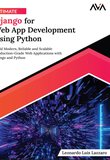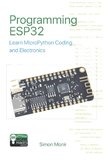-
.NET (.NET Core)
-
1C
-
APL
-
AWK
-
Agda
-
Agile/Scrum
-
Alef
-
Assembler
-
Basic
-
Beta Programming Language
-
Big Data/DataScience
-
C
-
C#
-
C++
-
CSS
-
Cobol
-
Crystal
-
D
-
Dart
-
DataBase (SQL)
-
Delphi
-
F#
-
Flutter
-
Fortran
-
GPT/AI/ИИ
-
GameDev
-
Git
-
Go (Golang)
-
HTML
-
Hacking and Security
-
Haskell
-
Java
-
JavaScript (JS)
-
Julia
-
Kotlin
-
Machine Learning (ML)
-
Natural language processing (NLP)
-
PHP
-
Pascal
-
Python
-
R
-
Ruby
-
Rust
-
Scratch
-
Swift
-
UML
-
UX/UI
-
Visual Basic
-
Wolfram
-
XML
-
АСУ
-
Проектирование/System Design
-
Сети/Network
-
Схемотехника/электронные схемы
-
.NET (.NET Core)
-
1C
-
APL
-
AWK
-
Agda
-
Agile/Scrum
-
Alef
-
Assembler
-
Basic
-
Beta Programming Language
-
Big Data/DataScience
-
C
-
C#
-
C++
-
CSS
-
Cobol
-
Crystal
-
D
-
Dart
-
DataBase (SQL)
-
Delphi
-
F#
-
Flutter
-
Fortran
-
GPT/AI/ИИ
-
GameDev
-
Git
-
Go (Golang)
-
HTML
-
Hacking and Security
-
Haskell
-
Java
-
JavaScript (JS)
-
Julia
-
Kotlin
-
Machine Learning (ML)
-
Natural language processing (NLP)
-
PHP
-
Pascal
-
Python
-
R
-
Ruby
-
Rust
-
Scratch
-
Swift
-
UML
-
UX/UI
-
Visual Basic
-
Wolfram
-
XML
-
АСУ
-
Проектирование/System Design
-
Сети/Network
-
Схемотехника/электронные схемы
Меню
Writing Secure and Maintainable Python Code: Unlock the Secrets of Expert-Level Skills

Автор: Jones Larry
Переводчик: Пролттдшии
Дата выхода: 2024
Издательство: Nobtrex L.L.C.
Количество страниц: 341
Размер файла: 3,8 МБ
Тип файла: PDF
Добавил: codelibs
1 Python Security Best Practices
1.1 Understanding Python Security Risks
1.2 Safeguarding Code with Secure Coding Standards
1.3 Managing Dependencies and Third-Party Libraries
1.4 Implementing Input Validation and Sanitization
1.5 Using Secure Storage for Sensitive Data
1.6 Applying Cryptography for Data Security
1.7 Securing Python Applications in Production
2 Secure Authentication and Authorization
2.1 Fundamentals of Authentication and Authorization
2.2 Implementing Password-Based Authentication
2.3 Using Multi-Factor Authentication
2.4 Leveraging OAuth and OpenID Connect
2.5 Securing Tokens for API Access
2.6 Role-Based Access Control (RBAC)
2.7 Implementing Single Sign-On (SSO)
3 Data Protection and Encryption in Python
3.1 Understanding Data Protection Principles
3.2 Introduction to Cryptographic Libraries in Python
3.3 Symmetric Encryption Techniques
3.4 Asymmetric Encryption and Key Management
3.5 Hashing for Data Integrity
3.6 Best Practices for Data Encryption
3.7 Securing Data in Transit and at Rest
4 Error Handling and Logging
4.1 Principles of Robust Error Handling
4.2 Using Exceptions Effectively
4.3 Custom Exception Classes
4.4 Logging Best Practices
4.5 Configuring the Python Logging Module
4.6 Structured Logging for Better Insights
4.7 Ensuring Security in Logging Practices
5 Writing Maintainable Code with Design Patterns
5.1 Essentials of Maintainable Code
5.2 Overview of Design Patterns
5.3 Creational Patterns
5.4 Structural Patterns
5.5 Behavioral Patterns
5.6 Applying Patterns to Python Code
5.7 Evaluating Maintainability with Code Metrics
6 Testing and Debugging Techniques
6.1 Importance of Testing in Software Development
6.2 Unit Testing with Python’s unittest Module
6.3 Behavior-Driven Development with pytest-bdd
6.4 Mocking and Testing Dependencies
6.5 Test Coverage and Continuous Integration
6.6 Debugging Techniques and Tools in Python
6.7 Advanced Debugging with IDEs
7 Code Versioning and Collaboration with Git
7.1 Foundations of Version Control Systems
7.2 Getting Started with Git
7.3 Branching Strategies and Best Practices
7.4 Collaborating with Git and GitHub
7.5 Managing Code Conflicts
7.6 Leveraging Git for Code Review Processes
7.7 Automating Workflows with Git Hooks
8 Performance Optimization and Profiling
8.1 Understanding the Importance of Performance Optimization
8.2 Identifying Performance Bottlenecks
8.3 Profiling Python Code with cProfile
8.4 Optimizing Algorithm Efficiency
8.5 Enhancing Performance with Cython
8.6 Leveraging Asynchronous Programming
8.7 Monitoring and Performance Testing Tools
9 Threading and Concurrent Execution
9.1 Fundamentals of Threading in Python
9.2 Creating and Managing Threads
9.3 Synchronization and Locking Mechanisms
9.4 Using Thread Pools for Task Management
9.5 Concurrent Execution with asyncio
9.6 Handling Exceptions in Multithreaded Applications
9.7 Performance Considerations and Best Practices
10 Secure and Maintainable APIs
10.1 Design Principles for Secure APIs
10.2 Building Maintainable API Structures
10.3 Authentication and Authorization in APIs
10.4 Input Validation and Error Handling
10.5 Protecting APIs Against Common Threats
10.6 Rate Limiting and Throttling for Security
10.7 Monitoring and Logging for APIs
Unlock the secrets of expert-level Python programming with “Writing Secure and Maintainable Python Code: Unlock the Secrets of Expert-Level Skills.” This comprehensive guide equips seasoned developers with the advanced techniques necessary to enhance the security and maintainability of their Python applications. From implementing cutting-edge security protocols to mastering robust code structures with proven design patterns, this text offers a wealth of insights to elevate your coding practices.
Delve into critical topics such as secure authentication, data encryption, and optimizing performance to ensure your applications are both resilient and efficient. Each chapter progresses through carefully curated sections, each designed to build upon the last, providing a cohesive understanding of the nuanced challenges in modern Python development. With a focus on real-world applicability, these strategies empower you to safeguard your projects from vulnerabilities and improve long-term maintainability.
Whether you are refining your pre-existing skills or seeking to drive your development team towards best practices, this book serves as an invaluable resource. Benefit from actionable advice on testing and debugging, threading and concurrent execution, and leveraging Git for effective collaboration. With “Writing Secure and Maintainable Python Code,” move confidently forward on the path to mastering Python, fortifying your applications against the challenges of an evolving digital landscape.









